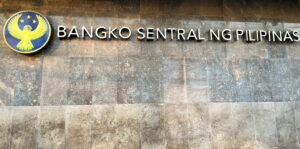YIELDS on term deposits went down on Wednesday on expectations of further policy easing by the Bangko Sentral ng Pilipinas (BSP) amid benign inflation.
The central bank’s term deposit facility (TDF) fetched a total of P117.295 billion in bids, below the P190 billion placed on the auction block but higher than the P103.771 billion in tenders recorded for the P100 billion offered a week earlier. The BSP only awarded P106.69 billion in papers as the one-week tenor went undersubscribed again after the increase in the offer volume.
Broken down, tenders for the seven-day deposits were at P60.19 billion, well below the P140 billion placed on the auction block, but higher than the P38.846 billion in bids recorded for the P50-billion offer the prior week. However, the central bank awarded only P56.69 billion in one-week papers.
Accepted yields were from 5.235% to 5.27%, higher than the 5.23% to 5.265% margin seen a week ago. Still, the weighted average accepted yield for the seven-day deposits went down by 0.25 basis point (bp) to 5.2524% from 5.2549% last week.
On the other hand, the two-week deposits attracted P57.105 billion in bids, more than the P50 billion offered by the central bank but below the P64.925 billion in tenders logged for the same volume auctioned off last week. The BSP made a full P50-billion award of the 14-day tenor.
Banks asked for rates ranging from 5.2575% to 5.29%, lower than the 5.265%-5.305% spread recorded a week ago. This caused the average yield for the two-week papers to decline by 0.81 bp to 5.282% from 5.2901% previously.
The BSP has not auctioned off 28-day term deposits for nearly five years to give way to its weekly offerings of securities with the same tenor.
Both the TDF and BSP bills are used by the central bank to mop up excess liquidity in the financial system and to better guide market rates towards the policy rate.
Rizal Commercial Banking Corp. Chief Economist Michael L. Ricafort said in a Viber message said the TDF rates inched lower even as seven-day tenor was undersubscribed and partially awarded as demand was affected by the government’s ongoing public offer of retail Treasury bonds that is scheduled to end on Friday.
“BSP TDF yields were also marginally lower after BSP Governor Eli M. Remolona, Jr. again signaled possible two 25-bp rate cuts for the rest of 2025… [and] after local inflation data improved to the slowest in nearly six years or since October 2019, considered benign and could still support the dovish signals recently by local monetary authorities,” Mr. Ricafort said.
He added that the peso’s recent rebound would also help keep inflation low.
Mr. Remolona said on Monday that a rate cut is “quite likely” at the Monetary Board’s next meeting on Aug. 28.
If realized, this would be its third straight rate cut since April. The central bank has so far lowered borrowing costs by a total of 125 bps since it began its easing cycle in August 2024.
The BSP chief also said that they are expecting to deliver only two more rate cuts this year, including the one they could implement this month.
A third reduction is “unlikely” as it would lead to a smaller output gap.
After the Aug. 28 meeting, the BSP will have two more policy meetings before the end of 2025.
Mr. Remolona also said inflation will likely settle well within target this year. Headline inflation sharply eased to a near six-year low of 0.9% in July, marking the fifth straight month that inflation settled below the central bank’s 2-4% annual goal.
For the first seven months of the year, inflation averaged 1.7%.
MORE POLICY SUPPORTBank of America (BofA) Global Research they expect the BSP to cut benchmark rates two more times this year to support economic activity amid the weakness in some sectors seen in the second quarter.
However, while a reduction at the Monetary Board meeting this month is “all but done,” the second cut may depend on the US Federal Reserve’s policy stance to prevent the peso from weakening anew, it said.
“The pockets of weakness in industrial output and investment spending increase the chances not only of a rate cut in August but of another cut before end-2025,” BofA Global Research said in a report. “Low inflation, coupled with mixed growth trends do no inspire significant comfort on economic outlook, setting up the stage for more policy support.”
“The Bangko Sentral has all but affirmed a rate cut when they meet on Aug. 28. Indeed, the BSP Governor had indicated the potential for two policy rate cuts before end-2025. The second cut, if at all, would likely take place at the next meeting, on Oct. 9. The second cut in 2H25 may be more dependent on the move of the Fed, noting that the peso sharply weakened in late July when the BSPs dovish comments coincided with the hawkish hold of the Fed,” it added.
Meanwhile, BofA Global Research kept its Philippine gross domestic product (GDP) growth forecast of 5.5% for this year.
The economy grew by an annual 5.5% in the second quarter, supported by a rebound in agriculture production and faster household consumption.
For the first half, GDP growth averaged 5.4%, slower than the 6.2% a year ago. The government is targeting 5.5-6.5% GDP growth this year.
“The gradual recovery in consumption growth should continue to the second half, given another hike in minimum wages in July 2025, the bottoming out of inflation in the third quarter, and the potential decline in interest rates in the second half. Indeed, consumer credit demand is likely to lead loan growth, not corporate — consistent with the flat investment spending trend seen in the second quarter,” it said.
“Government spending growth will slow further in the second half. Trade is less clear but we think the strong rate of export growth in the first half may have included an effort to beat the imposition of reciprocal tariffs. As such, we may see a drop-off in exports in the second half.” — K.K. Chan

